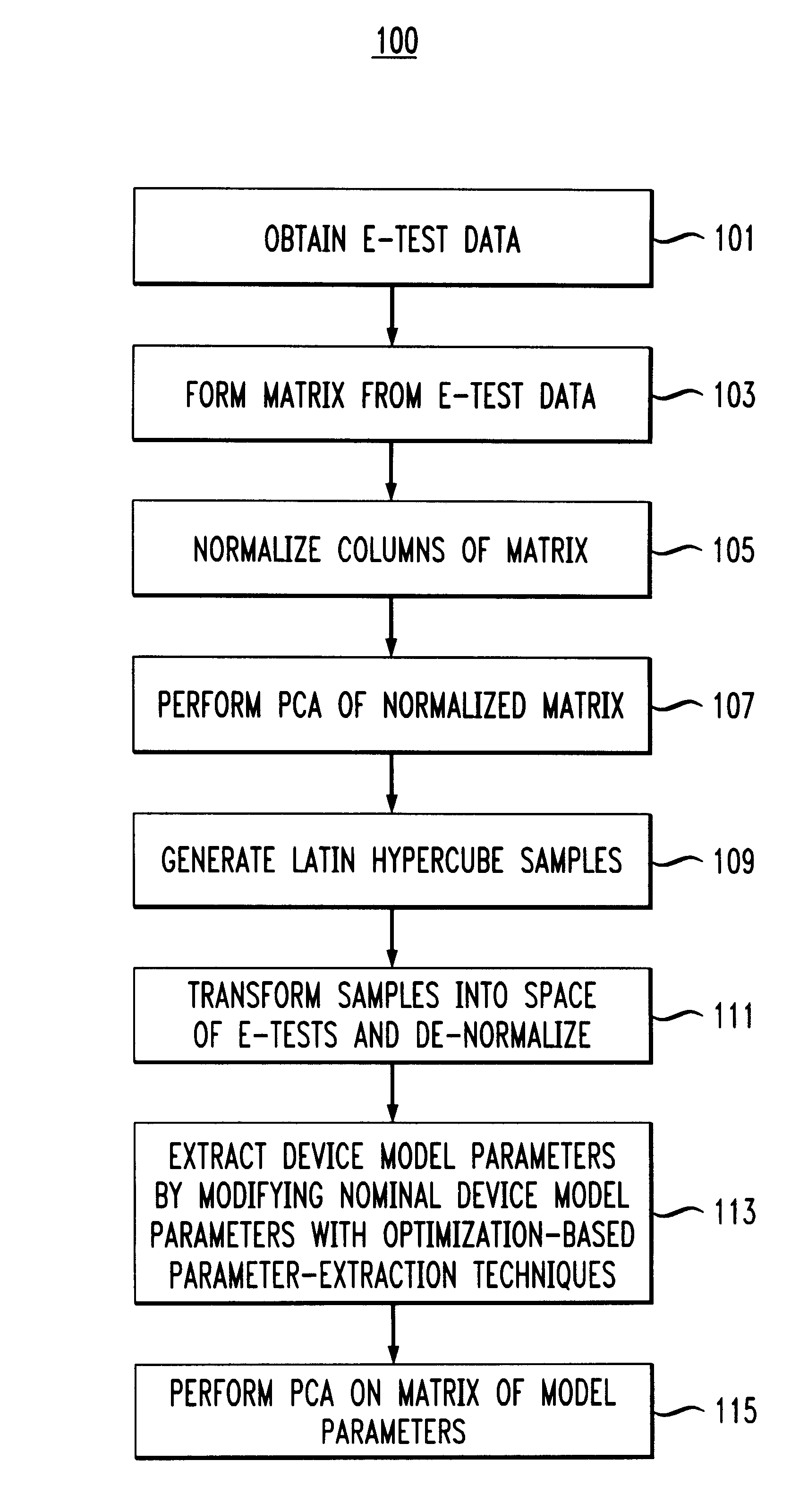Deriving statistical device models from electrical test data
a statistical device and test data technology, applied in individual semiconductor device testing, semiconductor/solid-state device testing/measurement, instruments, etc., can solve problems such as failure of some chips, chip failure, and chip failur
- Summary
- Abstract
- Description
- Claims
- Application Information
AI Technical Summary
Problems solved by technology
Method used
Image
Examples
Embodiment Construction
)
The present invention provides a technique for developing statistical device models, to be used for circuit simulation, for already-existing manufacturing processes designed to manufacture a given chip. Instead of indirectly determining the statistical distribution of device model parameters by first extracting them from resource- and time-intensive I-V measurements, and then relating these device model parameters to available e-test data, the statistical distributions of the e-test data are used to directly determine the statistical distribution of device model parameters.
In an already existing production semiconductor manufacturing process, the most easily available information on the state of devices is e-test data. E-test data is routinely made from a few representative test spots on each wafer on the manufacturing line, for monitoring purposes. (In this application, the term "e-test data" is used to refer to the result of tests made typically for monitoring purposes on test sp...
PUM
 Login to View More
Login to View More Abstract
Description
Claims
Application Information
 Login to View More
Login to View More - R&D
- Intellectual Property
- Life Sciences
- Materials
- Tech Scout
- Unparalleled Data Quality
- Higher Quality Content
- 60% Fewer Hallucinations
Browse by: Latest US Patents, China's latest patents, Technical Efficacy Thesaurus, Application Domain, Technology Topic, Popular Technical Reports.
© 2025 PatSnap. All rights reserved.Legal|Privacy policy|Modern Slavery Act Transparency Statement|Sitemap|About US| Contact US: help@patsnap.com



